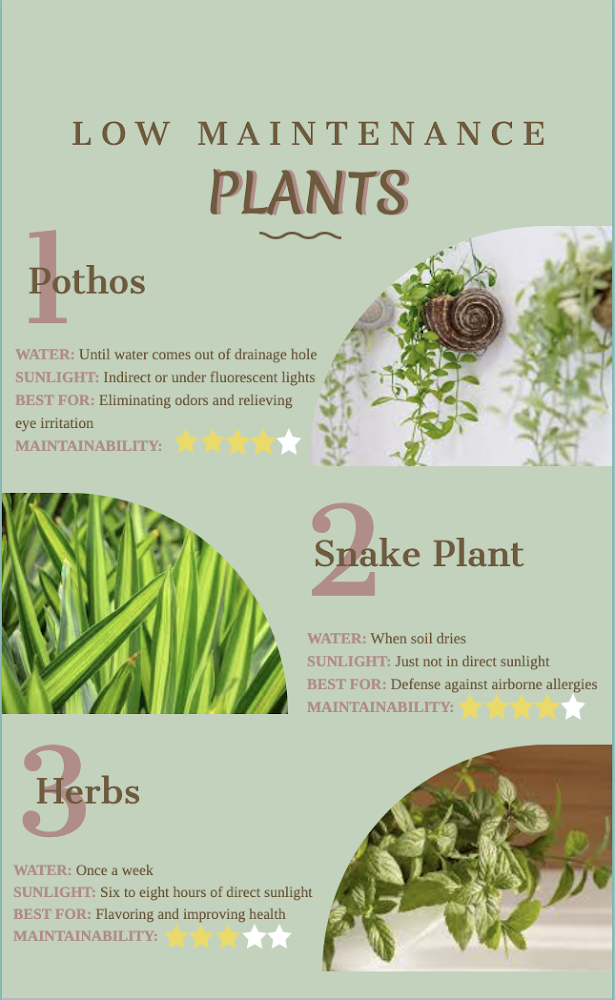By Abby Pan
Staff Writer
Taking root in a busy school year comes with stress and struggles, but these low maintenance plant options will leave you time to focus on your studies and are great for sprucing up your environment!

Pothos
Known as the devil’s ivy, pothos live up to their meaning of “hard to kill.” They thrive in many conditions from indirect sunlight to shaded areas, to even under fluorescent lights. If you’re looking for room decor, its ivies add a flowy, angel-like look as it trails down furniture, bookcases and desks.
As a hardy beginners’ plant, it is safe to drench the plant when watering and stop when water starts coming out of the draining hole. If its leaves start to yellow, fall off or become dry and brown, it’s time for more water. According to Swanson Nursery, pothos purify the air to eliminate odors and alleviate eye irritation after too much screen time. Since pothos contain toxic calcium oxalates, keep it out of reach of small children and pets.
Snake plants
Worrying about when to water your plant is pointless and, since ramping amounts of schoolwork are inevitable, snake plants are for you! Indoors or outdoors, water the plant when its soil dries and be sure to not put it in direct sunlight. Snake plants thrive in both dark and bright environments, but keep in mind that it may not look its best in completely shaded areas since it can grow dull and floppy.
INFOGRAPHIC/ Abby Pan
(cont.)
Not only do snake plants act as a common household decor plant, a study from NASA showed that they can remove four major toxins from the air rather than the typical one to two. By filtering indoor airflow and increasing moisture, snake plants are a great defense against airborne allergies. Despite its aesthetics and usefulness in improving air quality, snake plants can irritate pets’ throats and tongues if ingested.
Herbs
To those wanting to add more flavor to their meals, try planting some herbs! According to Healthline, many studies show how herbs can suppress sickness. They require little care, except for when it’s time to water and harvest.
Overwatering leads to root rot diseases and decreasing flavor, so be sure to plant them in a different amount of well-drained nutritious soil and water, according to the herb. They grow best in full sunlight with six to eight hours of direct sunlight a day.
When it’s time to harvest, don’t cut more than one-third of the plant, and cut off its flowers as you want its energy to be focused on tasty growth. The easiest herbs to grow include basil, thyme, oregano, mint, lavender, rosemary and cilantro. These pair well with salads and work with many dishes.
